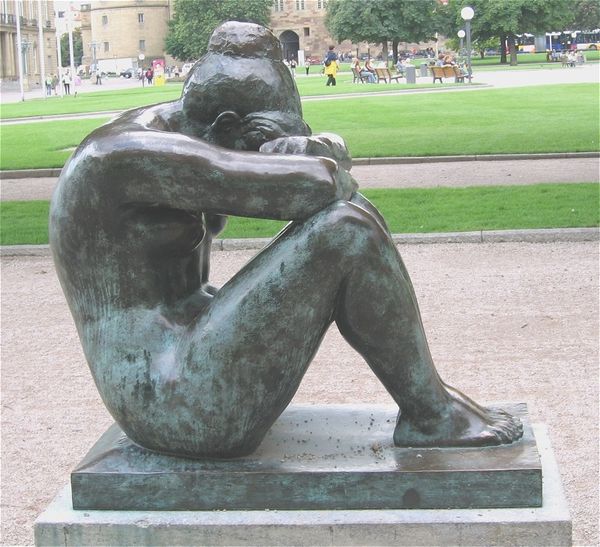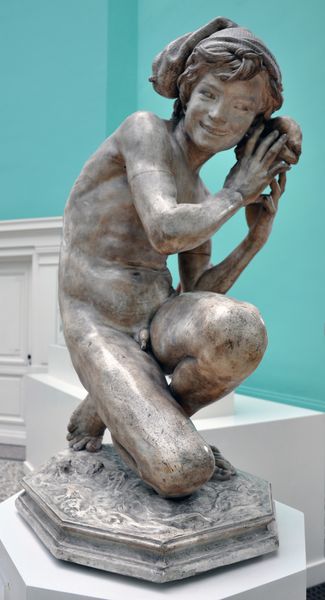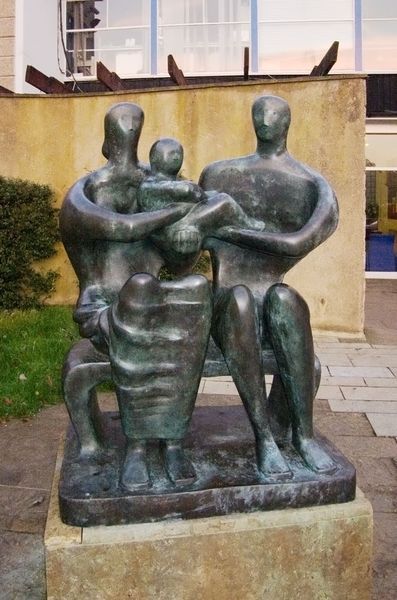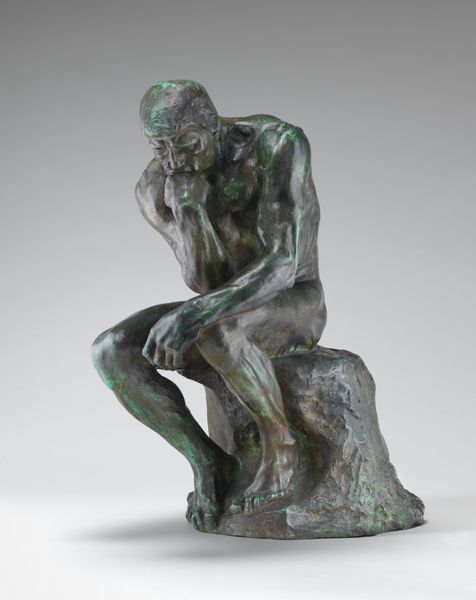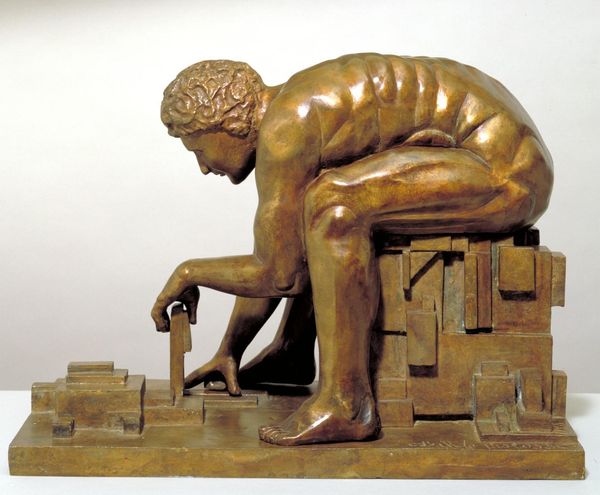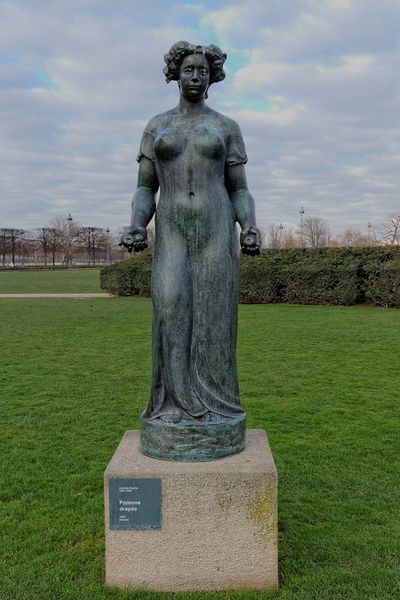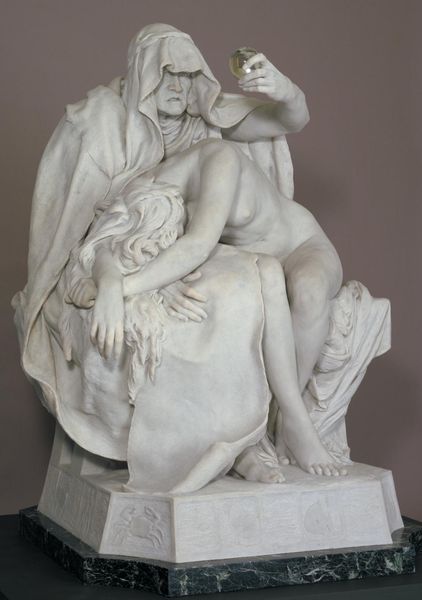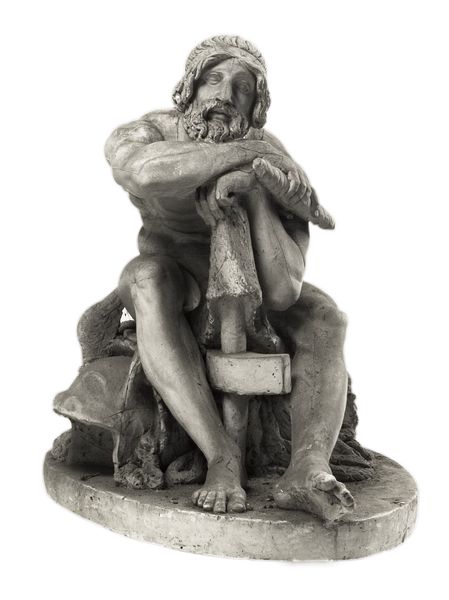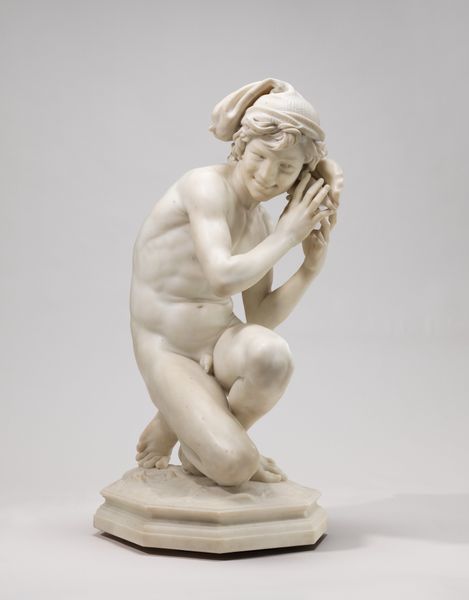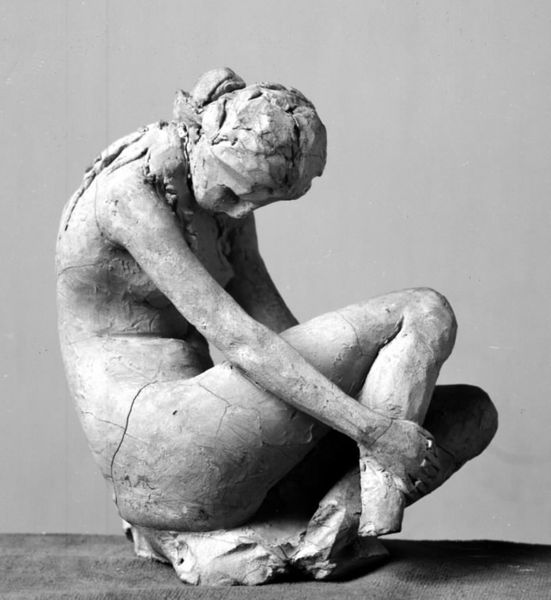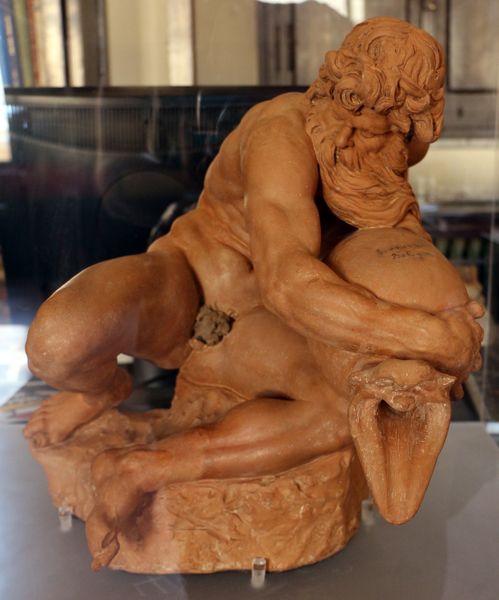
carving, bronze, public-art, sculpture
#
portrait
#
carving
#
neoclassicism
#
sculpture
#
bronze
#
public-art
#
figuration
#
sculpture
Copyright: Public domain
Curator: This bronze sculpture, titled "Douleur," meaning pain or sorrow, was created by Aristide Maillol around 1922. The piece exemplifies his unique take on neoclassicism. Editor: Immediately, I’m struck by the weight of it, both physically and emotionally. The texture of the bronze seems to accentuate the heaviness of her pose, the slump of her shoulders. Curator: Indeed, the figure’s posture is key to understanding Maillol's intention. Consider the context: it was conceived in the aftermath of World War I, reflecting a collective grief. "Douleur" acts as a universal symbol of mourning, not tied to any specific identity, gender or politics, but rather the sheer human cost of the war. Editor: And it’s so tactile. Look at the draping of the garment, the way it clings and falls; it makes you think about the process, the physical labor of the artist wrestling with the material to evoke this feeling. Bronze-casting itself is an act of transformation and permanence – memorializing grief. Curator: Absolutely, and that transformation is central to the neoclassical revival. Maillol sought to return to what he saw as fundamental human values and forms after the perceived decadence of late 19th-century art, recontextualizing suffering within a broader philosophical framework. Editor: Though neoclassical in form, Maillol brings a palpable physicality. It reminds us that materials and labor are never neutral; bronze in particular becomes charged through industry, trade, and even weaponry, factors that play a significant role in historical interpretation of sculptures of this type. Curator: Perhaps the most potent aspect of this work is how Maillol conveys a feeling that transcends any single historical moment. Its legacy lies in speaking to the perennial nature of sorrow itself, something each viewer can connect to regardless of gender or class. Editor: For me, reflecting on the process— the molding, the casting, the finishing— brings to mind how much intention and deliberate design go into evoking this depth of feeling, how even universal sorrow can be rendered powerfully specific through careful craftsmanship.
Comments
No comments
Be the first to comment and join the conversation on the ultimate creative platform.
